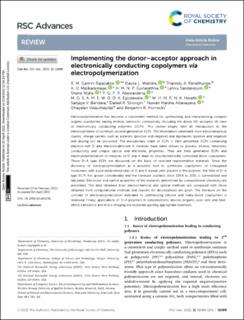| dc.contributor.author | Rajapakse, Gamini | |
| dc.contributor.author | Watkins, Davita | |
| dc.contributor.author | Ranathunge, Tharindu | |
| dc.contributor.author | Gunarathne, H M N P | |
| dc.contributor.author | Sandakelum, Lahiru | |
| dc.contributor.author | Malikaramage, Asitha Udayanga | |
| dc.contributor.author | Wylie, Shane | |
| dc.contributor.author | Abewardane, P G P R | |
| dc.contributor.author | Egodawela, M. G. S. A. M. E. W. D. D. K | |
| dc.contributor.author | Herath, W. H. M. R. N. K. | |
| dc.contributor.author | Bandara, Sanjaya | |
| dc.contributor.author | Strongin, Daniel R | |
| dc.contributor.author | Attanayake, Nuwan Harsha | |
| dc.contributor.author | Velauthapillai, Dhayalan | |
| dc.contributor.author | Horrocks, Benjamin R | |
| dc.date.accessioned | 2023-03-23T13:26:21Z | |
| dc.date.available | 2023-03-23T13:26:21Z | |
| dc.date.created | 2022-07-26T00:20:00Z | |
| dc.date.issued | 2022 | |
| dc.identifier.issn | 2046-2069 | |
| dc.identifier.uri | https://hdl.handle.net/11250/3060169 | |
| dc.description.abstract | Electropolymerization has become a convenient method for synthesizing and characterizing complex organic copolymers having intrinsic electronic conductivity, including the donor (D)–acceptor (A) class of electronically conducting polymers (ECPs). This review begins with an introduction to the electrosynthesis of common second-generation ECPs. The information obtainable from electroanalytical studies, charge carriers such as polarons (positive and negative) and bipolarons (positive and negative) and doping will be discussed. The evolutionary chain of ECPs is then presented. ECPs comprising electron-rich D and electron-deficient A moieties have been shown to possess intrinsic electronic conductivity and unique optical and electronic properties. They are third generation ECPs and electropolymerization of mixtures of D and A leads to stoichiometrically controlled block copolymers. These D–A type ECPs are discussed on the basis of selected representative materials. Since the discovery of electropolymerization as a powerful tool to synthesize copolymers of conjugated monomers with a pre-determined ratio of D and A repeat units present in the polymer, the field of D–A type ECPs has grown considerably and the literature available since 2004 to 2021 is summarized and tabulated. Electronic and optical properties of the materials determined by computational chemistry are presented. The data obtained from electrochemical and optical methods are compared with those obtained from computational methods and reasons for discrepancies are given. The literature on the concept of electropolymerization extended to synthesizing triblock and many-block copolymers is reviewed. Finally, applications of D–A polymers in optoelectronic devices (organic solar cells and field-effect transistors) and in bio-imaging are explained quoting appropriate examples. | en_US |
| dc.language.iso | eng | en_US |
| dc.publisher | Royal Society of Chemistry | en_US |
| dc.rights | Navngivelse 4.0 Internasjonal | * |
| dc.rights.uri | http://creativecommons.org/licenses/by/4.0/deed.no | * |
| dc.title | Implementing the donor–acceptor approach in electronically conducting copolymers via electropolymerization | en_US |
| dc.type | Peer reviewed | en_US |
| dc.type | Journal article | en_US |
| dc.description.version | publishedVersion | en_US |
| dc.rights.holder | © 2022 The Author(s) | en_US |
| dc.source.journal | RSC Advances | en_US |
| dc.identifier.doi | 10.1039/D2RA01176J | |
| dc.identifier.cristin | 2039498 | |
| dc.relation.project | Direktoratet for internasjonalisering og kvalitetsutvikling i høgare utdanning: NORPART-2016/10237, LKA- 3182/LKA-16/0001 | en_US |
| dc.source.articlenumber | 12089 | en_US |
| cristin.ispublished | true | |
| cristin.fulltext | original | |
| cristin.qualitycode | 1 | |

